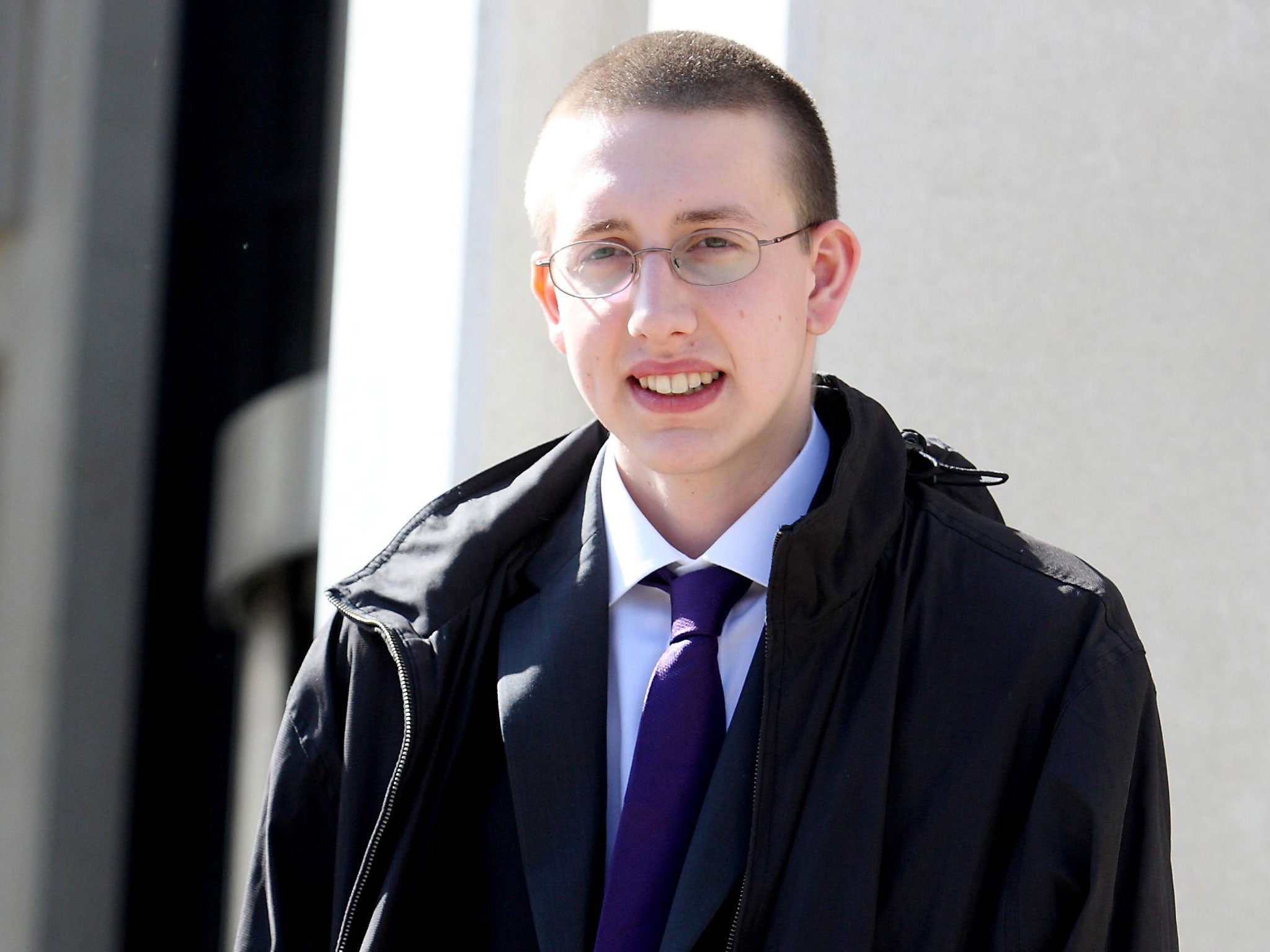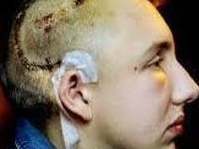'Excruciating pain': Student protester describes alleged attack by baton-wielding police officer that left him with brain injury
Alfie Meadows gives evidence at disciplinary hearing nine years after he suffered injury at tuition-fee protests

A student has described the moment he was “almost killed” with a police officer’s baton during protests against tuition fees nine years ago.
Alfie Meadows needed emergency brain surgery after being struck on the head during a demonstration in London in December 2010.
Mr Meadows said he had been hit by a police officer, whom the Independent Office for Police Conduct (IOPC) identified as Detective Constable Mark Alston.
The City of London Police officer denies the allegation at the ongoing misconduct hearing.
Giving evidence on Monday, Mr Meadows said he had been “kettled” with other student protesters in Parliament Square when he arrived at a line of riot police.
He described seeing a police officer “thrashing around with his baton” before swinging it down from above his head.
“It was coming straight towards my head. I instinctively spun around and I was then hit on the head by the baton,” Mr Meadows told the hearing.
“I was struck on the top right of my head and it was incredibly hard and painful. I had a flash of light and it was the most painful thing I’ve ever experienced.”
Video footage played at the hearing was said to capture the moment DC Alston raised his weapon before the blow.
Mr Meadows, who is currently studying philosophy, described feeling “excruciating pain” as he pushed back through the crowd to escape.
He said he removed his balaclava to find that his head was bleeding, and told a friend that he had been hit in the head with a police baton.
Mr Meadows said the police medic who first checked him said that he “looked OK”, but directed him to an ambulance where a paramedic allowed the student to leave after he said he felt alright.
Shortly afterwards, however, he said he felt pain spreading through his body and met up with his mother, who is an academic and was also at the protest.
The pair found a second ambulance near Victoria railway station and were taken to hospital, where Mr Meadows’ condition deteriorated before he underwent emergency surgery for bleeding on the brain.
Mr Meadows was in hospital for several days and then was sent home for several months to recover, forcing him to delay his studies at Middlesex University.
He needed more than 100 staples in his head and was left with a large scar, but was charged with causing violent disorder and taken to court where he was cleared by a jury in 2013.

An investigation by the police watchdog found that DC Alston had a case to answer for gross misconduct, but City of London Police rejected its recommendation.
The force then failed in a court bid to challenge the IOPC’s direction that he should face a full hearing.
The hearing was previously told that violent protesters had been attacking police officers, pelting them with missiles including bricks and battering them with fences.
Mr Meadows admitted touching a large, metal fence that passed over his head in the crowd, but he claimed it was being used as a barrier to protect protesters from officers.
In a tense exchange with a lawyer representing DC Alston, he said he had not seen missiles being thrown towards police until he was shown footage from the protest.
“There were officers running from the front of the line into the crowd and ramming us with shields,” he added. “They were using force on me and other people.”
When asked why he had not moved back from the front of the crowd, Mr Meadows replied: “I didn’t think I was about to be almost killed.”
The hearing took place exactly nine years after the protest, when more than 10,000 people were demonstrating against a vote to triple tuition fees.
It followed outbreaks of disorder at previous student protests, during which the Metropolitan Police “kettled” teenagers after officers were criticised over the speed of their response to vandalism at the Conservative campaign headquarters at Millbank.
Mr Meadows said he had been at that protest and a second one in which students were detained in Whitehall, telling the hearing that police had become more “heavy handed” at each one.
Earlier in Monday’s hearing, a former chief inspector who had been leading DC Alston’s unit on the day said it was “one of the most violent protests” he had seen in a career spanning more than 20 years.
Stuart Phillips added: “It felt more personal, that the protesters were targeting police rather than targeting parliament or institutions. It was a collective group targeting the police.”
He said he had been directed to use his unit to drive protesters into a containment area in Parliament Square, and instructed them to use helmets and shields as protection from missiles including poles, masonry and glass bottles.
Mr Phillips said he “could not recall” telling officers including DC Alston to draw batons, but took out his own as they moved through the crowd.
Asked whether they was any circumstance where an officer would be permitted to strike a protester on the head, he said it would go against training, adding: “It wouldn’t be reasonable to do it.”
DC Alston is accused of using his “baton in a violent, uncontrolled and dangerous manner when he used it to deliver a number of downward strikes at head height towards a group of demonstrators”.
The officer is also accused of using unreasonable force when he “hit Alfie Meadows on the head, causing a serious head injury”.
A statement submitted on DC Alston’s behalf said: “The officer accepts he wielded his baton, but denies that it was in a violent, uncontrolled and dangerous manner or was in any way disproportionate in light of the circumstances in which he was operating.
“The officer denies hitting Mr Meadows, or anyone, on the head with it.”
The panel, made up of two senior police officers and an independent member, will continue considering the case on Tuesday.
